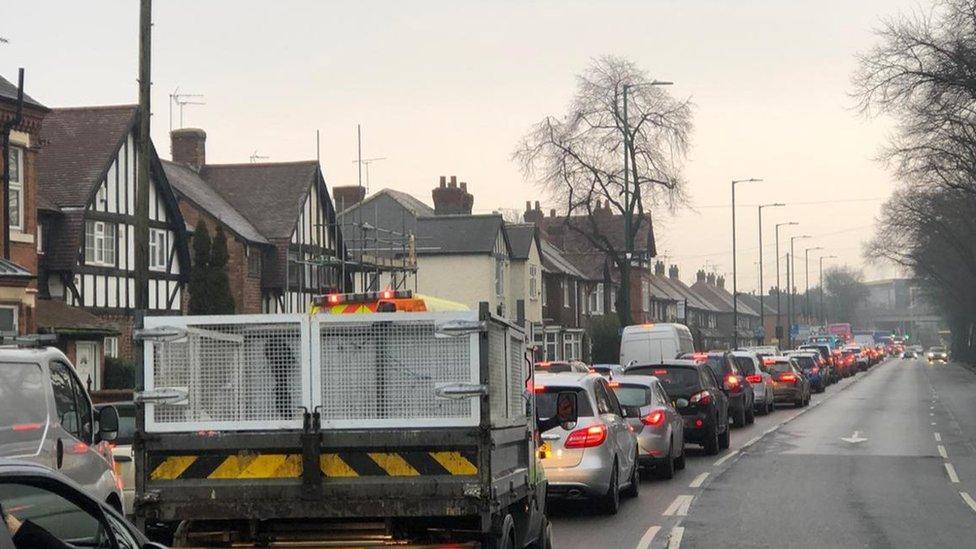Nottingham A52 bridge closure: Congestion 'off the scale'
- Published
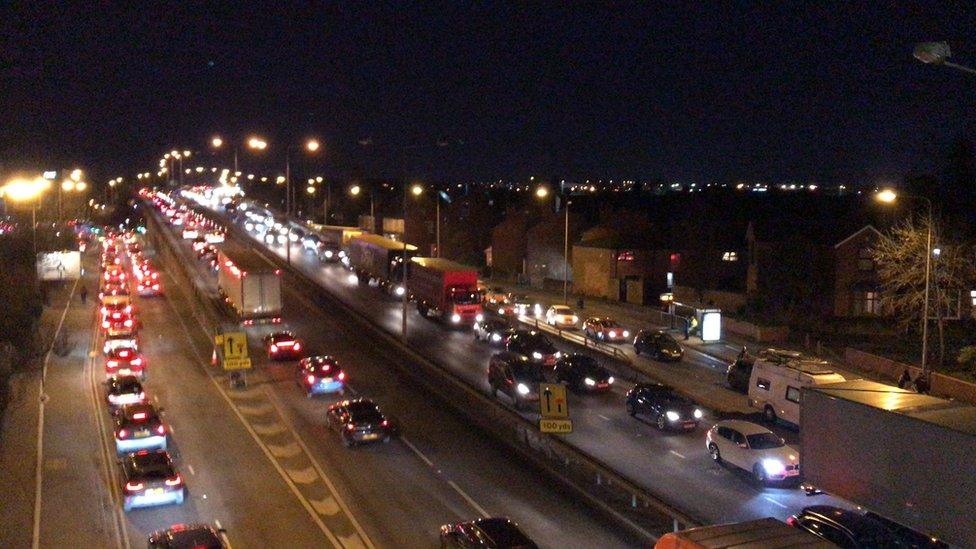
Roads were congested on Friday evening due to the closure
The closure of a bridge made traffic congestion in Nottingham go off the scale, according to sat-nav creator TomTom.
Monday evening's rush hour was more congested than any other city in the world, according to its data.
Average journey times took at least three times longer than they would have done at uncongested times of the day.
The bridge, which is part of the A52, has been closed as a precaution while corrosion damage is investigated.
'You have to laugh'
Beth Perry, a scientific officer for a lung cancer research company, normally gets home from work in 20 minutes but her journey on Monday took four hours and 15 minutes.
"I work at the Boots site in Beeston and it took me three hours to get off site - it normally takes two minutes," said Miss Perry.
"After I got off site it took me another hour to get to Radcliffe-on-Trent. I left work at quarter to four and I got home at about eight.
"I was busting for the toilet and very thirsty but you have to laugh about it I suppose."

Top 10 most congested cities on Monday
Nottingham - maximum congestion of 200%
Stoke-on-Trent - 200%
Montreal - 152%
Edinburgh - 134%
Ottawa - 130%
Novosibirsk - 118%
Quebec - 114%
Leiden - 106%
Lodz - 106%
Krakow - 103%

The blue dotted line shows average congestion in Nottingham in 2019, while the red line shows congestion on Monday
TomTom monitors travel times and congestion using data from people with iPhones and other smartphones, TomTom apps, built-in car sat-navs, and its own navigation devices.
Nottingham was ranked 166th in the world, external and 17th in the UK for congestion in 2019. Its congestion level is normally 27%, which means a trip will take 27% more time than it would during the "baseline" uncongested conditions (0%), when traffic is free-flowing.
The scale only goes up to 200% - and Nottingham went above this between 15:00 and 17:00, external on Monday.
"It's very unusual for it to be that extreme," said TomTom traffic expert Nick Cohn.
"200% actually means average travel times are three times what they would be without congestion.
"This is an average over the whole road network, so actually there were probably some people who were stuck even longer than three times the normal travel time."
Congestion in Stoke-on-Trent only reached 200% between 14:00 and 15:00, so not as long as in Nottingham. Long journey times there were thought to be because it snowed and the council had not gritted roads.

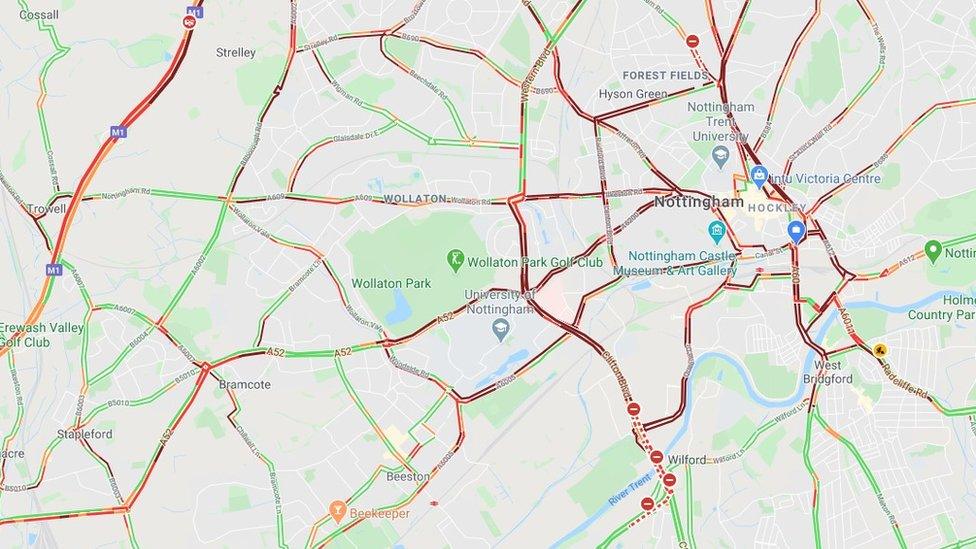
This map from Monday afternoon shows how the bridge closure caused congestion to spread across the city
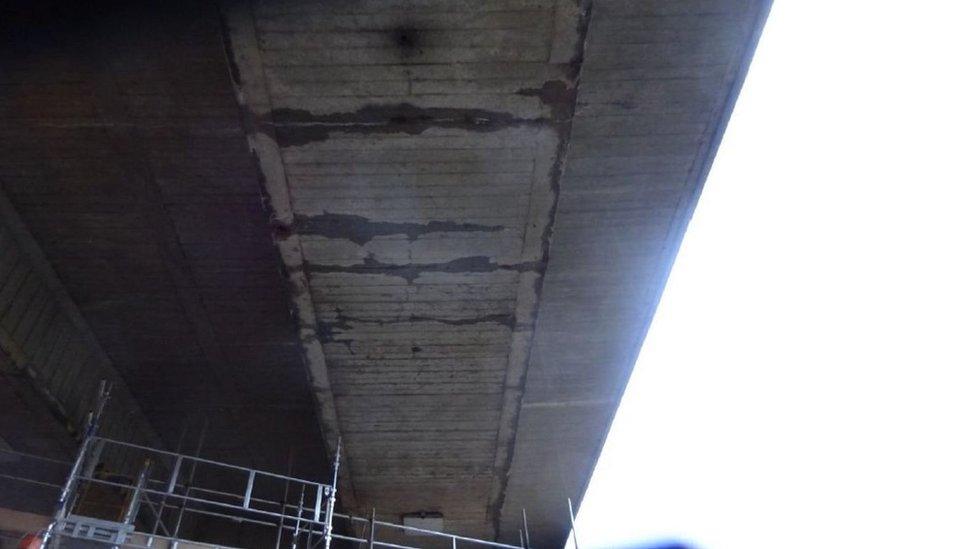
The bridge was closed when the steel reinforcements were found to be damaged
The closed bridge is technically one of two collectively known as Clifton Bridge, which both go over the River Trent and are part of the city's ring road.
Highways England closed it on Thursday "as a precaution" after damaged steel caused by corrosion was identified underneath the road.
Adrian Oulds, head of service delivery at Highways England, said: "We are grateful to drivers for their patience during the closure and we'd like to thank them for heeding our advice and using different roads to get to their destinations.
"For now, we'd encourage them to allow extra time for journeys and avoid the area if possible."
Highways England promised to reopen one lane on Tuesday evening, then did not, saying it had been "unable to complete safety barrier installation".
It still hopes to open one lane, but opening the other two lanes could potentially take weeks.
Allow X content?
This article contains content provided by X. We ask for your permission before anything is loaded, as they may be using cookies and other technologies. You may want to read X’s cookie policy, external and privacy policy, external before accepting. To view this content choose ‘accept and continue’.
Allow X content?
This article contains content provided by X. We ask for your permission before anything is loaded, as they may be using cookies and other technologies. You may want to read X’s cookie policy, external and privacy policy, external before accepting. To view this content choose ‘accept and continue’.

Follow BBC East Midlands on Facebook, external, Twitter, external, or Instagram, external. Send your story ideas to eastmidsnews@bbc.co.uk, external.
- Published10 February 2020
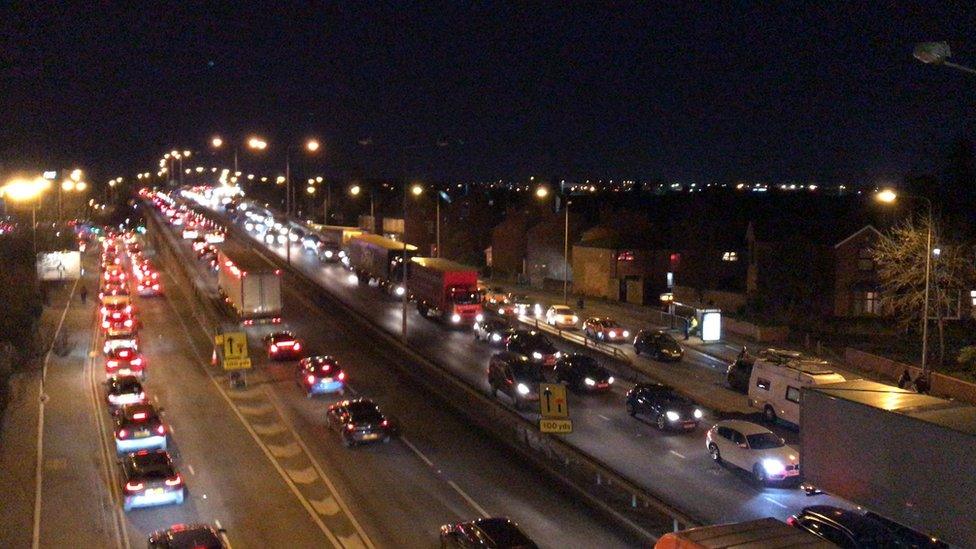
- Published7 February 2020
